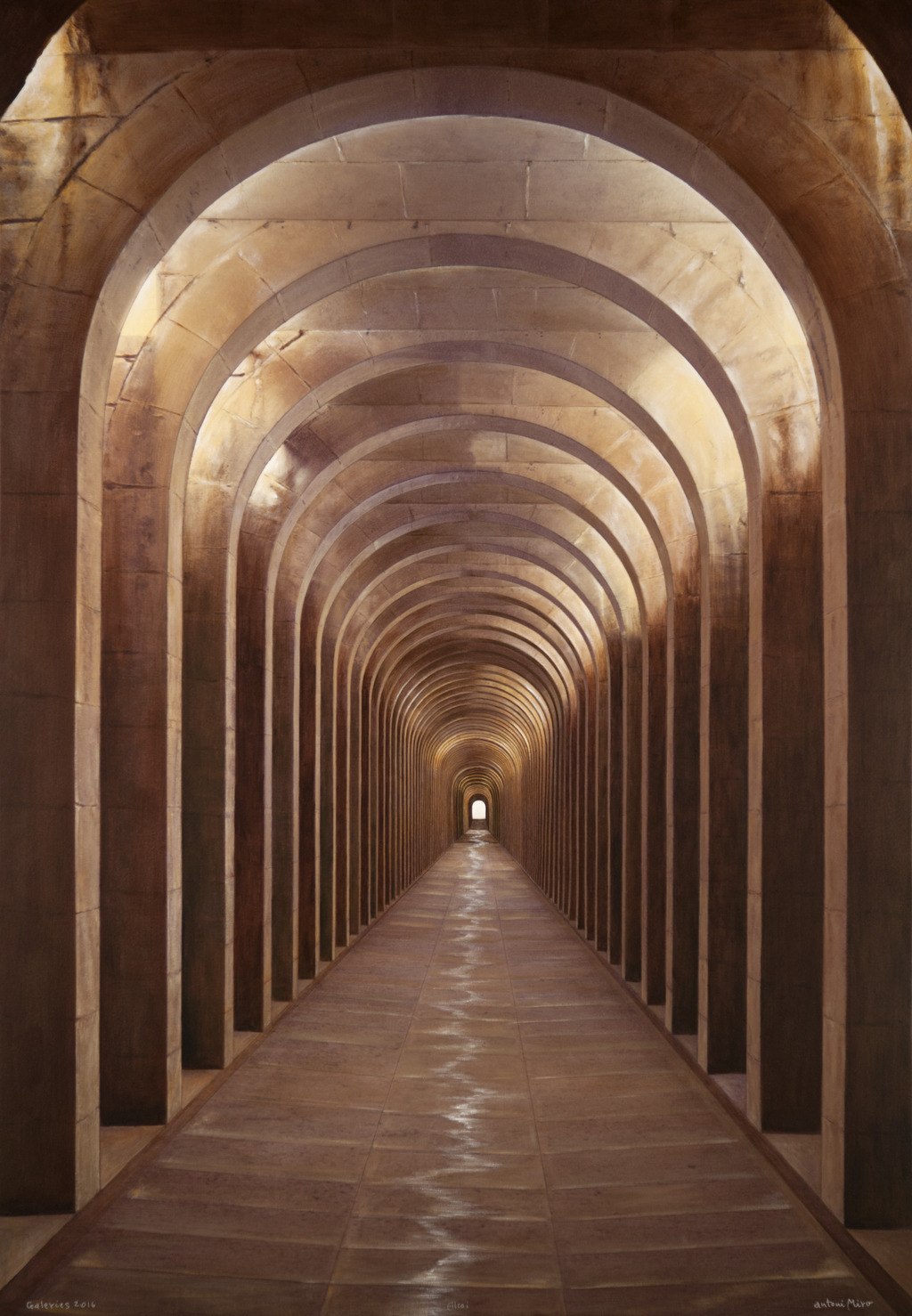Galeries (Galleries)
This work is part of the “Slopes and Bridges” sub-series and depicts one of the galleries in the Sant Antoni Abat cemetery in Alcoi, whose origin dates back to the end of the nineteenth century — a time of fast population growth. According to the hygienist criteria then in vogue, the cemetery was relocated to the outskirts of the city. This was to address citizens’ unhealthy living conditions, especially those of the lower classes, such as the proletariat dwelling in industrial cities. Accordingly, the new cemetery was built on a sunny area of high ground that was exposed to the prevailing winds. Since it occupies a large area, the engineer Enrique Vilaplana Juliá came up with the pragmatic solution of levelling the site to create a big platform. Here, he had to resort to retaining walls to prevent land slippage, hence the construction of the superb buttressing arches shown in Miró’s painting.
The frontal viewpoint reveals the considerable depth of this underground (but unexcavated) space, which is built up from the repetition, at certain fixed intervals, of the same element in a straight line. The base module is a wall structure that houses a semi-circular arch-shaped opening at its top. Between each of these elements and the next are the niches housing the bodies. The special proportions chosen for the separation distance between them, its thickness and the setback of the pall containing the plaque of the stacked tombs gives all the presence to the niches. The juxtaposition of the elements makes for an overlapping of the series of arches with the interposition of the recurring transversal vaults spanning the gap between the walls.
The sumptuary decorative arts found on the tomb plaques, which would be seen by a visitor on either side, become invisible when going through this space, which has a strong directionality. Strong daylight floods in from the right side of the canvas, through holes for lighting and ventilation. A smaller light can be seen coming from the other side, and on more that coincides with the painting’s vanishing point, where the stairs go outside, to an upper level.
As in other works by Miró, the high level of detail of the manufacture (the main element in the painting), and some of its defects, matches certain omissions of elements that are completely accessory (lanterns, drainage grids...), and that would spoil the appreciation of the essential elements of these corridors.
The artist paints elements that fragmentarily incorporate the memories of his home town, and he does so as an homage, explaining — among other things — the great advances Alcoi made for the town’s working class in the past. Vicent Andres Estellés noted the artist’s strong identification with the town, stating that “Antoni Miró is a great Valencian, a militant, and a fighter. He works, lives, fights, and paints in Alcoi — a town that still conserves the house in which the First International met.”
Santiago Pastor Vila
